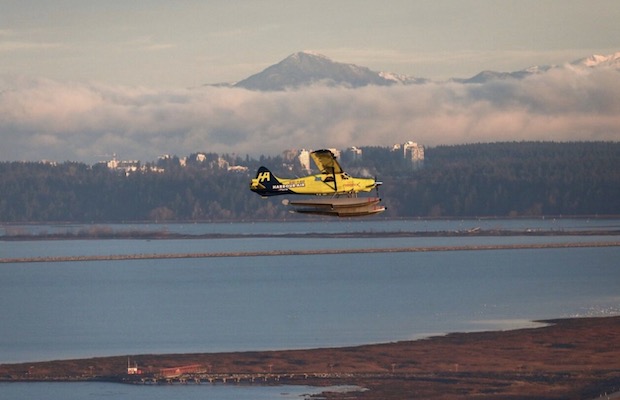World’s First Fully Electric Commercial Aircraft Takes off in Canada

The world’s first fully electric commercial aircraft took its inaugural test flight on November 10, 2019, taking off from Vancouver, Canada. “This proves that commercial aviation in all-electric form can work,” said Roei Ganzarski, chief executive of Seattle-based engineering firm magniX.
The company designed the plane’s motor and worked in partnership with Harbour Air, which ferries half a million passengers a year between Vancouver, Whistler ski resort and nearby islands and coastal communities. Ganzarski said the technology would mean significant cost savings for airlines — not to mention zero emissions. “This signifies the start of the electric aviation age,” he told reporters.
Civil aviation is one of the fastest-growing sources of carbon emissions as people increasingly take to the skies and new technologies have been slow to get off the ground. The International Civil Aviation Organisation has encouraged greater use of efficient bio-fuel engines and lighter aircraft materials, as well as route optimisation. The electric plane – a 62-year-old, six-passenger DHC-2 de Havilland Beaver seaplane retrofitted with an electric motor – was piloted by Greg McDougall, founder and chief executive of Harbour Air.
“For me, that flight was just like flying a Beaver, but it was a Beaver on electric steroids. I actually had to back off on the power,” he said. “Our goal is to actually electrify the entire fleet. There’s no reason not to.” On top of fuel efficiency, the company would save millions in maintenance costs, as electric motors require “drastically” less upkeep, McDougall said.
The e-plane has to be tested further to confirm it is reliable and safe. In addition, the electric motor must be approved and certified by regulators. In Ottawa, Transport Minister Marc Garneau told reporters ahead of the maiden flight that he had his “fingers crossed that the electric plane will work well.” If it does, he said, “it could set a trend for more environmentally friendly flying.”
Battery power is also a challenge. An aircraft like the one flown on Tuesday could only fly about 100 miles on lithium-battery power, said Ganzarski.
Source: Saurenergy.com




